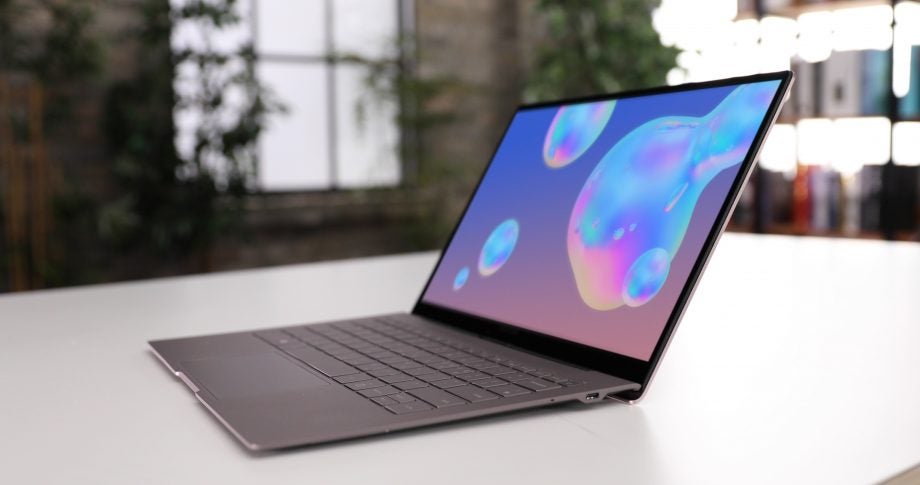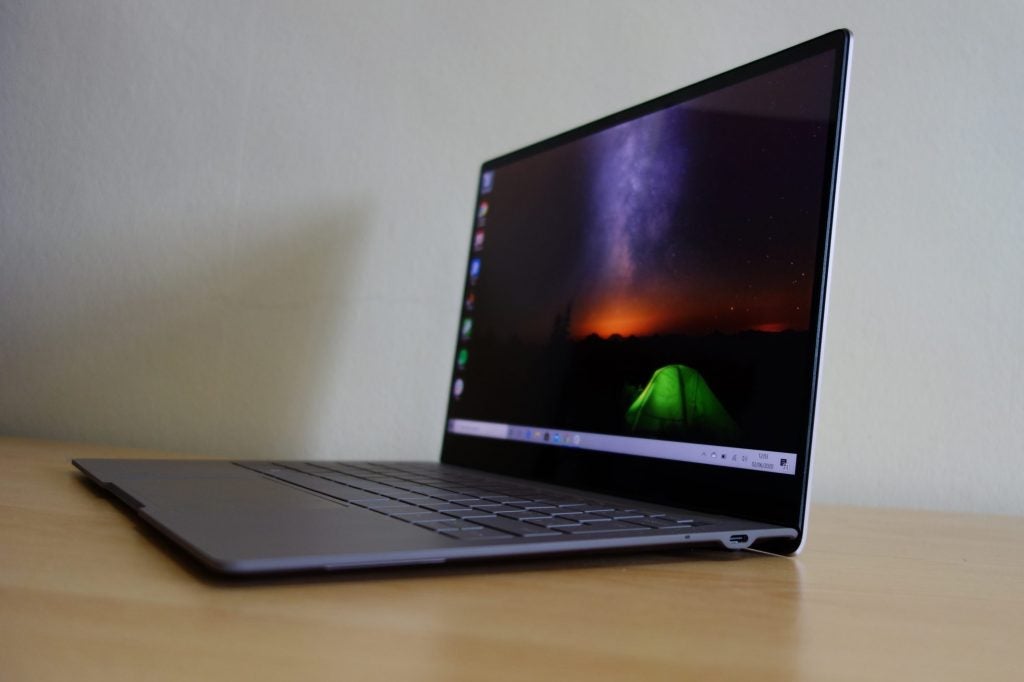Galaxy Book S Intel vs Qualcomm: Old issues re-Surface

Considering buying a Galaxy Book S but not sure whether you should get the Qualcomm or Intel version?
Well, that’s more than understandable as they look like very similar products at first glance. Which is why we put the two versions of the laptop head-to-head to see which is the better option.
Specifically we put one Galaxy Book S with an Intel i5 L16GZ (Lakefield) CPU head-to-head against one running Qualcomm’s Snapdragon 8cx chip. To avoid any disparity we also made sure both had 8GB RAM, 256GB storage and identical FHD resolution screens.
Below are our findings.
Galaxy Book S Intel vs Qualcomm: Specs
The Intel and Qualcomm chips have fairly different architectures and specs. You can see a rough breakdown of how they compare in the table below.
| CPU | Cores | Clock speeds | Manufacturing process |
| Intel i5 L16GZ | 6 | Base 1.40 GHz
Max Turbo Frequency 3.00 GHz |
10nm |
| Snapdragon 8cx | 8 | Silver cores running at 1.8GHz,
Gold cores running at 2.84GHz |
7nm |
If you’re not familiar what the above means, the Cliff Notes is that the Intel has higher single-core max performance than the Qualcomm, but is less power efficient, which is in line with how the two versions of the Galaxy Book S are being marketed. If you want super-long battery life go for Qualcomm, if you want better performance grab the Intel model.
That said, the Snapdragon has more cores which come in handy for multi-tasking. Workloads such as running multiple applications or having lots of web browser tabs open simultaneously can benefit from Qualcomm’s greater number of cores.
The Qualcomm chip is also the only version to have LTE support, though the benefit of this is countermanded by Intel’s support of the newer Wi-Fi 6 standard. LTE may be better for on-the-go connectivity, but you’ll need a working SIM card for it to function. And for Wi-Fi 6, you’ll need a compatible router to get the best speeds possible.
Related: Best Laptop 2020

Galaxy Book S Intel vs Qualcomm: Performance
This is normally the section of any versus where we’d start rattling off benchmark figures to compare the two laptops – benchmarks are synthetic tests that gauge specific areas of a computer’s performance by running a series of simulated processes.
But that’s not the case here as we once again ran into the age-old problem we’ve faced whenever comparing a Qualcomm on Windows device to an Intel or AMD equivalent: the primary is on an ARM-architecture.
This sounds small but it impedes every part of the actual user experience using the Galaxy Book S. Specifically, because Qualcomm chips run on an ARM based architecture, they’re not compatible with a significant number of Windows apps.
This meant that the majority of the benchmark programmes we use won’t run on the Qualcomm version of the Galaxy Book S. In fact, the only one we could successfully get up and running was Geekbench 5, which is designed to work on mobile and computer operating systems. You can see the results below.
| Geekbench 5 single-core | Geekbench 5 multi-core | PCMark 10 | 3DMark Time Spy | PC Mark 10 Battery | |
| Intel | 799 | 1616 | 2467 | 413 | 10hr43min |
| Qualcomm | 685 | 2553 | NA | NA | NA |
The NAs refer to testing tools that don’t work on the Qualcomm Galaxy Book S
As numbers go, this means that, as expected from their on paper specs, the Qualcomm is slower at single-core process, which make up the majority of office and basic use apps, but better at multi-core due to its higher core count.
The fact our standard battery benchmark doesn’t work with the Qualcomm chip made getting an exact comparison between the two, but with real world use we also found the on paper specs rang true. Generally we’d get at least 15 hours regular use out of the Snapdragon Galaxy Book S before needing to reach for the mains. The Intel version usually conked out after 8-10 hours.
However the numbers are truthfully fairly meaningless as with real world use, while it’s fine if you stick to Windows apps, the Qualcomm’s architecture continues to be a pain. Office apps, including Slack don’t run as efficiently, and most web browsers are noticeably slower and prone to crashing, especially when doing intensive multi-tab surfing.
A lot of freeware and popular creative suites are also a no go, to the point I had to start using GIMP for my basic photo editing as it has a 32-bit installer that was semi-stable on the Qualcomm.
If this sounds familiar, it should. It’s the same story we’ve been telling since Windows and ARM first flirted with each other on the original Surface convertible many moons ago. The fact is, though the battery life of Snapdragon devices is awesome, the architecture still hasn’t found its rhythm with Windows.
This is why every Windows laptop and convertible we test with the chips, including the latest uber-expensive Surface Pro X and spiff new Galaxy Book S, are a pain to use for anything but basic office work and web browsing.
Related: Intel Tiger Lake
Galaxy Book S Intel vs Qualcomm: Which is better?
The Qualcomm Snapdragon version of the Galaxy Book S and a key example how far ARM on Windows has come. The device offers stellar battery life and is generally fine, albeit a little slow, running apps from the official Windows Store that are marked as compatible.
But there’s no getting around the fact the Intel variant is less hassle to use. Apps across the board work on it and its higher clock speed translates into generally better performance. The biggest downside is that it’s battery life isn’t as good as the Snapdragon version and it doesn’t have an LTE option.
As a result, unless marathon battery life and LTE connectivity are must have items on your wish list, we’d generally see the Intel model as being a better option for most users.


